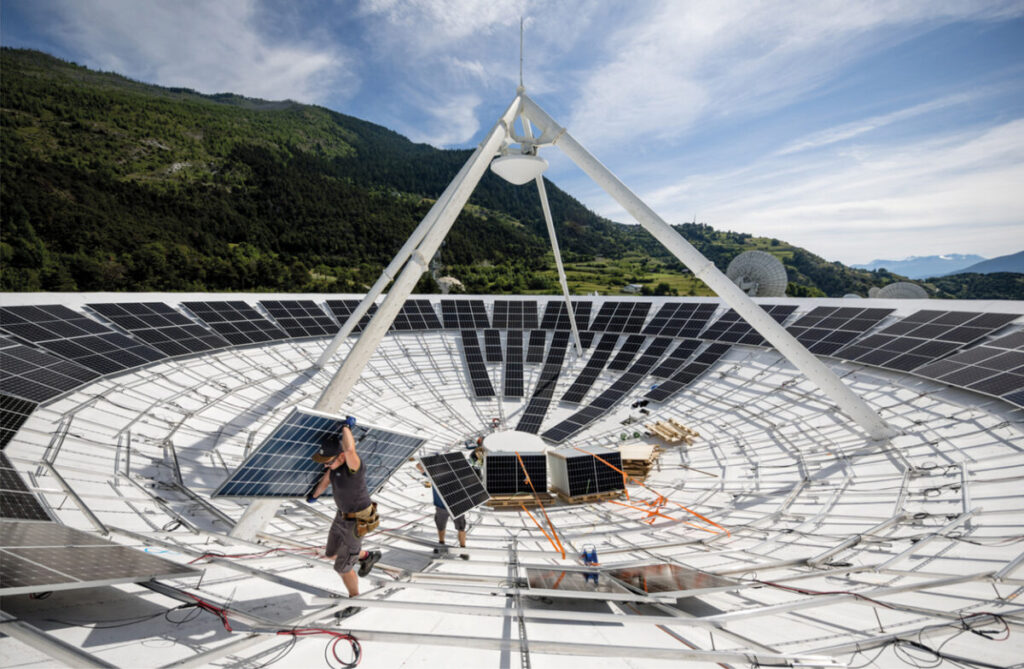Swiss energy company CKW has converted unused satellite dishes into solar systems. The dishes, located at the headquarters of the Swiss telecommunication services provider Leuk TDC, are used to compensate for the energy requirements of the company’s data center.
The installation comprises two satellite dishes that each contain 307 solar panels, where each dish can generate approximately 110,000 kWh of energy per year.
A solar system on the roof is also installed on the main building of the Computer and Datacenter from Leuk TDC and generates 550,000 kWh per year.
In addition to the solar installations, the data center is powered by energy from Hydroelectric power plants, which means that the entire energy needs are treated by renewable energy sources.

The project was developed in collaboration with Solar Inverter manufacturer SolarEdge. The company’s DC-optimized inverter solution of the company was used with power optimizers that were attached to each pair of solar panels to reduce the impact of modulesmismatch by the curved shape of the satellite dish.
“Having design flexibility with a solar installation is a huge advantage for installers,” Manuel Jossi explained, deputy head of solar technology for Central Switzerland near CKW. “In complex cases such as these with uneven surfaces, without the use of power optimizers, we would simply have not been able to reach somewhere near the level of energy that is being produced today.”
John Harris, the CEO of Leuk TDC, added that the design of the dishes, so that they can be aligned horizontally and vertically, turned out to be ideal for an installation of a solar panel.
“By following the path of the sun during the day, these dishes optimize the absorption of solar radiation,” said Harris. “After we have installed them, we get considerably more hours of electricity than the conventional ironing system and wealth optimization options improve the electricity production further.”
This content is protected by copyright and may not be reused. If you want to work with us and reuse part of our content, please contact: editors@pv-magazine.com.
Popular content


